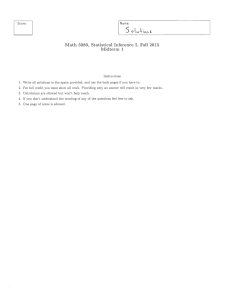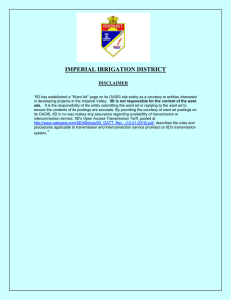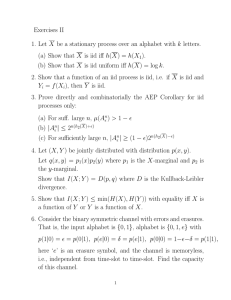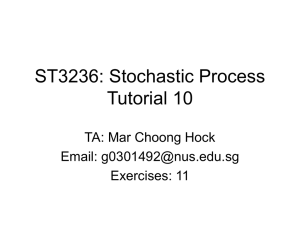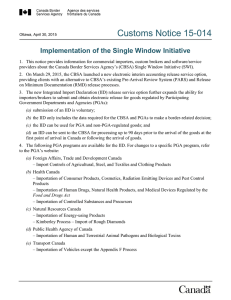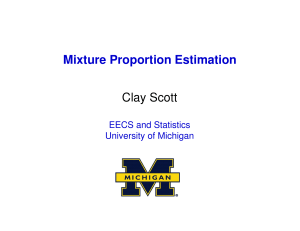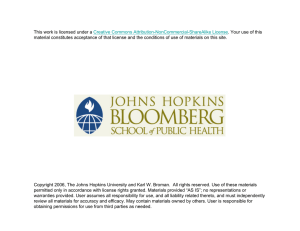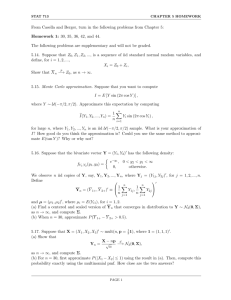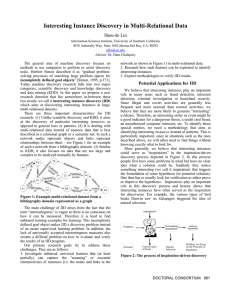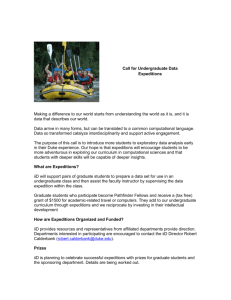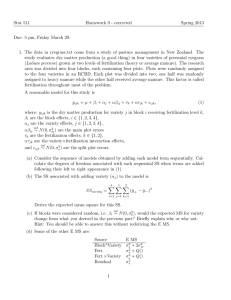Simulation and Queuing
advertisement
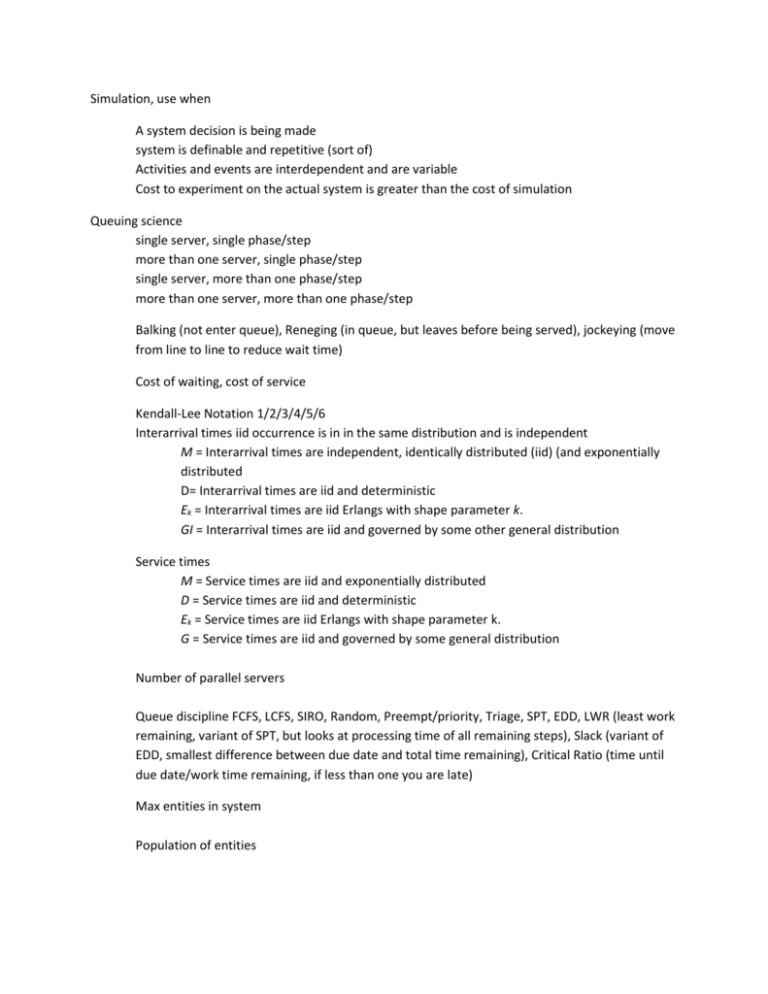
Simulation, use when A system decision is being made system is definable and repetitive (sort of) Activities and events are interdependent and are variable Cost to experiment on the actual system is greater than the cost of simulation Queuing science single server, single phase/step more than one server, single phase/step single server, more than one phase/step more than one server, more than one phase/step Balking (not enter queue), Reneging (in queue, but leaves before being served), jockeying (move from line to line to reduce wait time) Cost of waiting, cost of service Kendall-Lee Notation 1/2/3/4/5/6 Interarrival times iid occurrence is in in the same distribution and is independent M = Interarrival times are independent, identically distributed (iid) (and exponentially distributed D= Interarrival times are iid and deterministic Ek = Interarrival times are iid Erlangs with shape parameter k. GI = Interarrival times are iid and governed by some other general distribution Service times M = Service times are iid and exponentially distributed D = Service times are iid and deterministic Ek = Service times are iid Erlangs with shape parameter k. G = Service times are iid and governed by some general distribution Number of parallel servers Queue discipline FCFS, LCFS, SIRO, Random, Preempt/priority, Triage, SPT, EDD, LWR (least work remaining, variant of SPT, but looks at processing time of all remaining steps), Slack (variant of EDD, smallest difference between due date and total time remaining), Critical Ratio (time until due date/work time remaining, if less than one you are late) Max entities in system Population of entities
